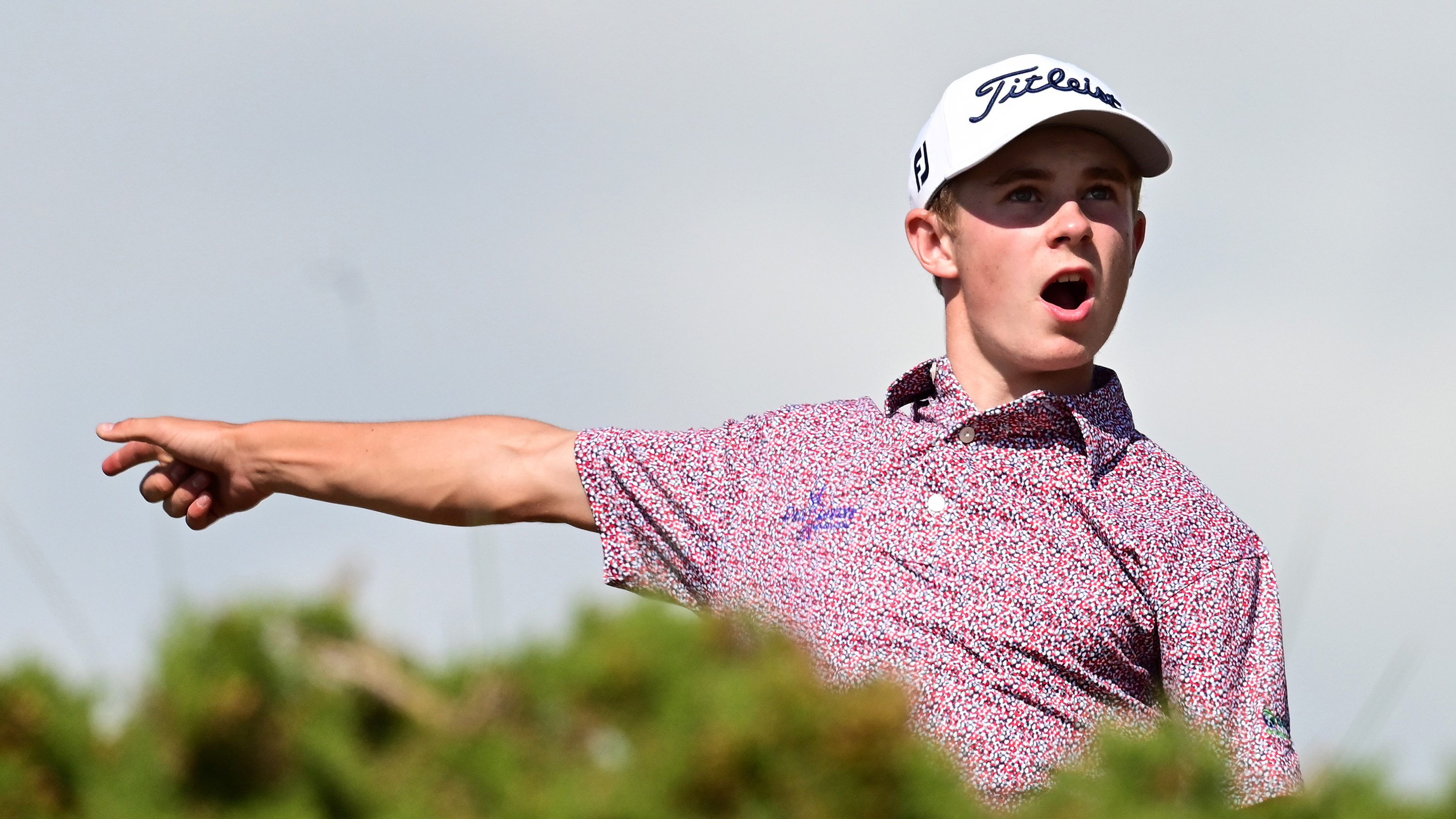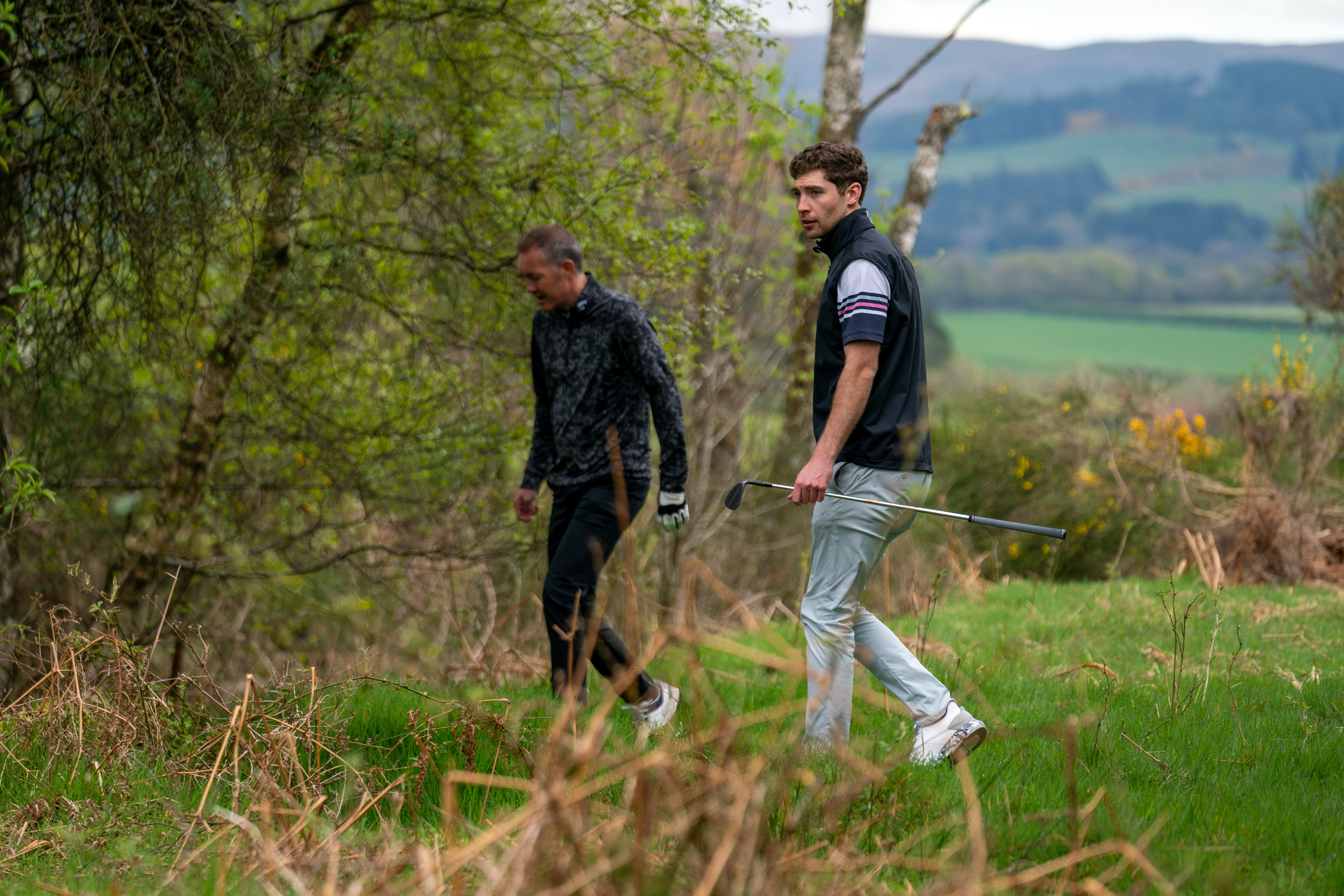When Should You Hit A Provisional Ball In Golf?
We give you the info you need on when to hit a provisional ball in golf and how to go about doing so. It can save time on the golf course.


Rule 18.3a deals with "provisional ball" and it is undoubtedly one of the most useful Rules in the book.
If you play a shot from anywhere on the course and believe it may be lost somewhere else on the course (not in a penalty area,) or be out of bounds you may (and indeed should) play another ball provisionally under penalty of stroke and distance. So, if you believe you have lost a ball from the tee, your provisional ball will be your third shot. If you believe your ball has gone in a penalty area, you should proceed under Rule 17.
If you play a provisional ball you should either, tee up again or place in the teeing area, if the shot you believe lost or out of bounds was a tee shot. Or, if the original shot has been played from anywhere else on the course, you should drop a ball within one club length of where the original shot was hit, no closer to the hole.
The intention of this Rule is to keep play flowing. If you go forward to search for your original ball and can't find it, you will have to walk back to play from where you struck the original shot. If you have already hit a provisional ball you can proceed with it.
If, after playing a provisional, you walk down to where you believed your original ball to have gone and find it there, then your original ball is back in play, the provisional is forgotten.
Rule 18.3b is important to know when it comes to playing a provisional ball. If you intend to play one because you believe your original ball is either lost on the course or is out of bounds, you must announce to someone that you are going to play a provisional. It's not enough to simply say, "I'm playing another ball."
Rule 18.3 goes on to say that you must say the word "provisional" or otherwise clearly indicate you are proceeding under Rule 18.3. It's a bit of a grey area but the clarifications of the Rules give some guidance. If you were to say, "I'm going to play another just in case," or "I'm playing another under Rule 18.3", that would be acceptable.
Subscribe to the Golf Monthly newsletter to stay up to date with all the latest tour news, equipment news, reviews, head-to-heads and buyer’s guides from our team of experienced experts.
For clarity, it's best to simply say you are playing a provisional ball!
If there's nobody with you when you play a provisional ball, you must tell a playing partner or opponent at the first available opportunity that you have done so.
If you fail to make it clear that you intend to play a provisional ball and play another ball, that ball is not a provisional ball; instead it becomes the ball in play under penalty of stroke and distance (Rule 18.3b). So, even if you find your original ball, the second ball you hit is now the one you have to proceed with. Make sure to say "provisional."
It's important to know that you can keep playing your provisional ball until you reach the vicinity of where you believe the original ball to be. But, if you hit the provisional from a point beyond where the original was likely to be, the provisional ball is now in play and the original ball is deemed lost.
Lost Ball

You can't declare a golf ball to be lost
If your original ball has gone into some bushes and your provisional is 300 yards down the middle, you should remember that you can't just declare your original ball to be lost. The Rules do not allow you to do that.
Under the definitions section of the 2023 Rule book, the definition of the term 'lost' simply states: "The status of a ball that is not found in three minutes after you or your caddie (or your partner or partner’s caddie) begin to search for it." It then clarifies, "A ball does not become lost as a result of the player declaring it to be lost."
You are not required to look for your ball but there's nothing to stop your playing partners from doing so. In fact, in matchplay, your opponents may wish to look for your ball if it's in a difficult predicament as it may be to their advantage.
But if that does happen and the ball is found, you will have to proceed using that ball even if you had declared it to be lost, as the Rules do not allow you to declare a ball lost! At the 2024 Open, spectators found Shane Lowry's ball in a gorse bush when he would really rather they hadn't as his provisional was in good shape. He had to proceed with the original and it cost him.

Fergus is Golf Monthly's resident expert on the history of the game and has written extensively on that subject. He has also worked with Golf Monthly to produce a podcast series. Called 18 Majors: The Golf History Show it offers new and in-depth perspectives on some of the most important moments in golf's long history. You can find all the details about it here.
He is a golf obsessive and 1-handicapper. Growing up in the North East of Scotland, golf runs through his veins and his passion for the sport was bolstered during his time at St Andrews university studying history. He went on to earn a post graduate diploma from the London School of Journalism. Fergus has worked for Golf Monthly since 2004 and has written two books on the game; "Great Golf Debates" together with Jezz Ellwood of Golf Monthly and the history section of "The Ultimate Golf Book" together with Neil Tappin , also of Golf Monthly.
Fergus once shanked a ball from just over Granny Clark's Wynd on the 18th of the Old Course that struck the St Andrews Golf Club and rebounded into the Valley of Sin, from where he saved par. Who says there's no golfing god?